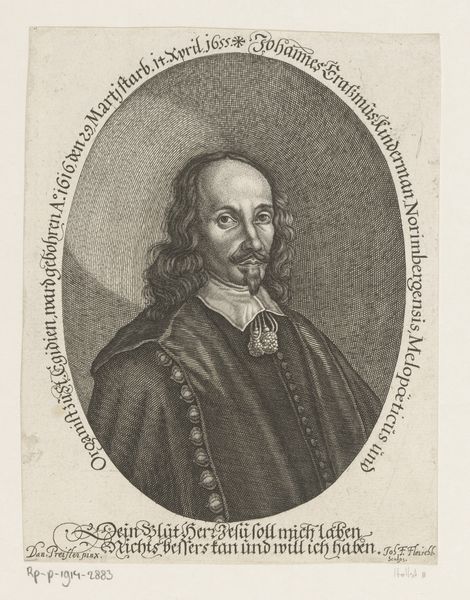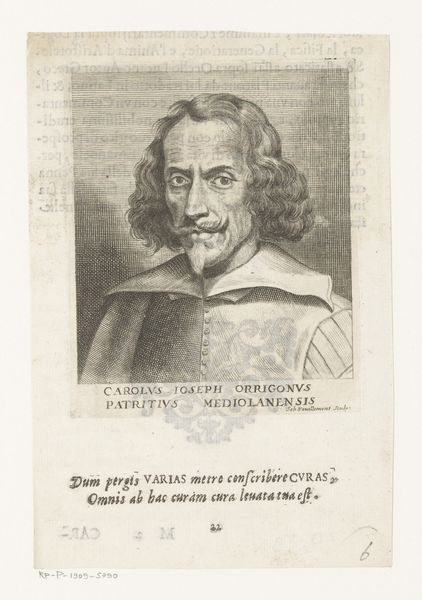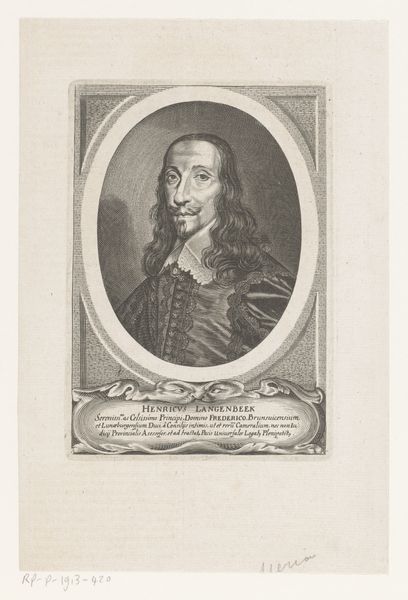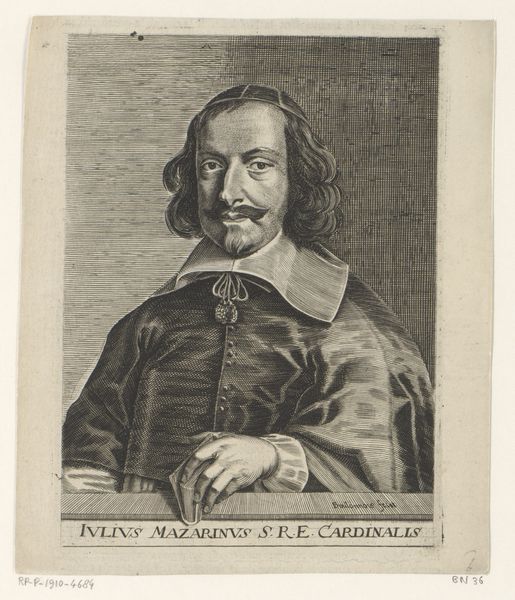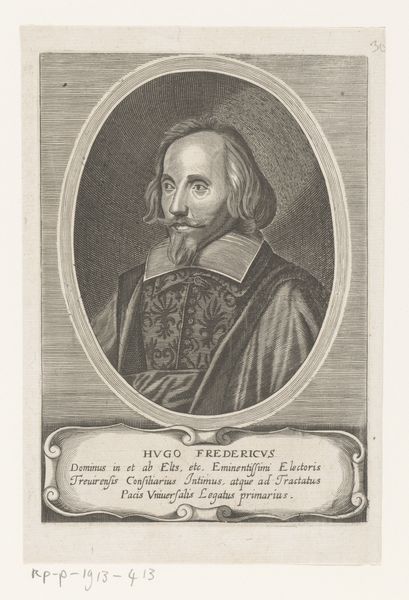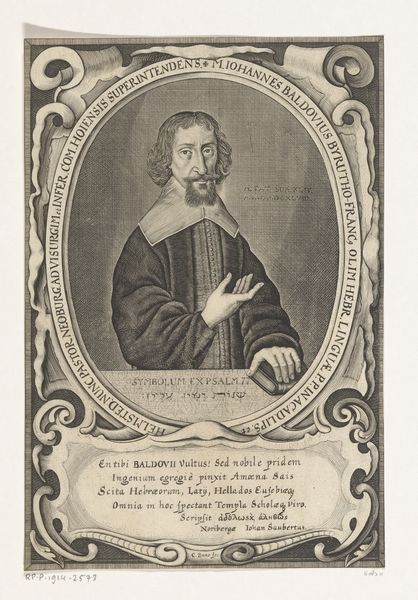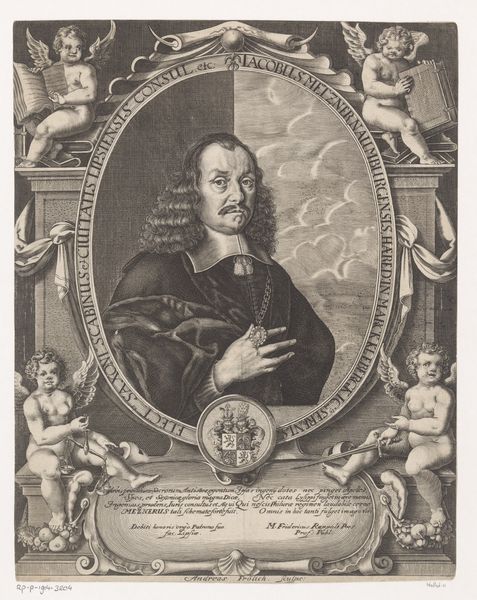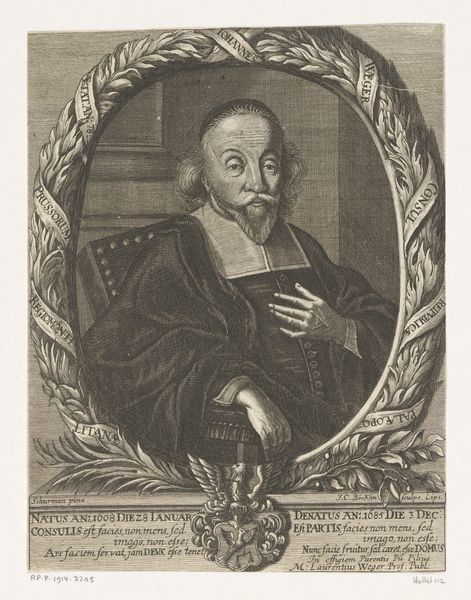
etching, engraving
#
portrait
#
baroque
#
etching
#
old engraving style
#
traditional media
#
engraving
Dimensions: height 218 mm, width 127 mm
Copyright: Rijks Museum: Open Domain
Curator: Welcome. Before us, we have "Portret van Samuel Heiland," an etching and engraving crafted by Lucas Kilian, likely between 1589 and 1637. It resides here at the Rijksmuseum. Editor: My initial response is to the intricate detail – the density of the lines creates such a rich, almost palpable texture. Curator: Kilian positions Samuel Heiland within an oval frame, surrounded by ornate decorations and inscriptions. Note also the contrast between the refined portrait and the imagery below, of angels, devils, and what appears to be a robed figure bearing a book, alluding to the conflict between good and evil that played out in Samuel Heiland's time. This portrait is so much more than representation; it engages complex religious and moral narratives. Editor: The stark monochrome palette enhances the graphic quality, while the precise linework brings Heiland’s face to life. Look at how he holds his hands, fingers subtly arranged – almost like a gesture frozen in time. It's captivating, and yet there’s something about the tightness of the rendering that keeps me at arm's length. It's a controlled performance. Curator: Kilian worked in Augsburg, a center of printmaking, amidst intense religious and political strife during the Thirty Years' War. Knowing this informs how we interpret the visual elements and textual inscriptions around the central portrait. The portrait served as an assertion of the subject’s beliefs and allegiance to the church during conflict. The text provides religious guidance about faith versus material possession. The duality that you observed wasn't only artistic, it was central to societal concerns at that time. Editor: It is a fascinating juxtaposition. What stands out to me further is Kilian’s skillful use of perspective and shadow. These elements imbue the subject with a presence, but it's all rigorously composed. Curator: Indeed. Ultimately, Lucas Kilian delivers more than just an image; it's an artifact imbued with the religious and political spirit of a turbulent time. Editor: Absolutely. It compels one to explore formal artistry and how the graphic, constructed image might also convey an individual’s complex humanity.
Comments
No comments
Be the first to comment and join the conversation on the ultimate creative platform.
